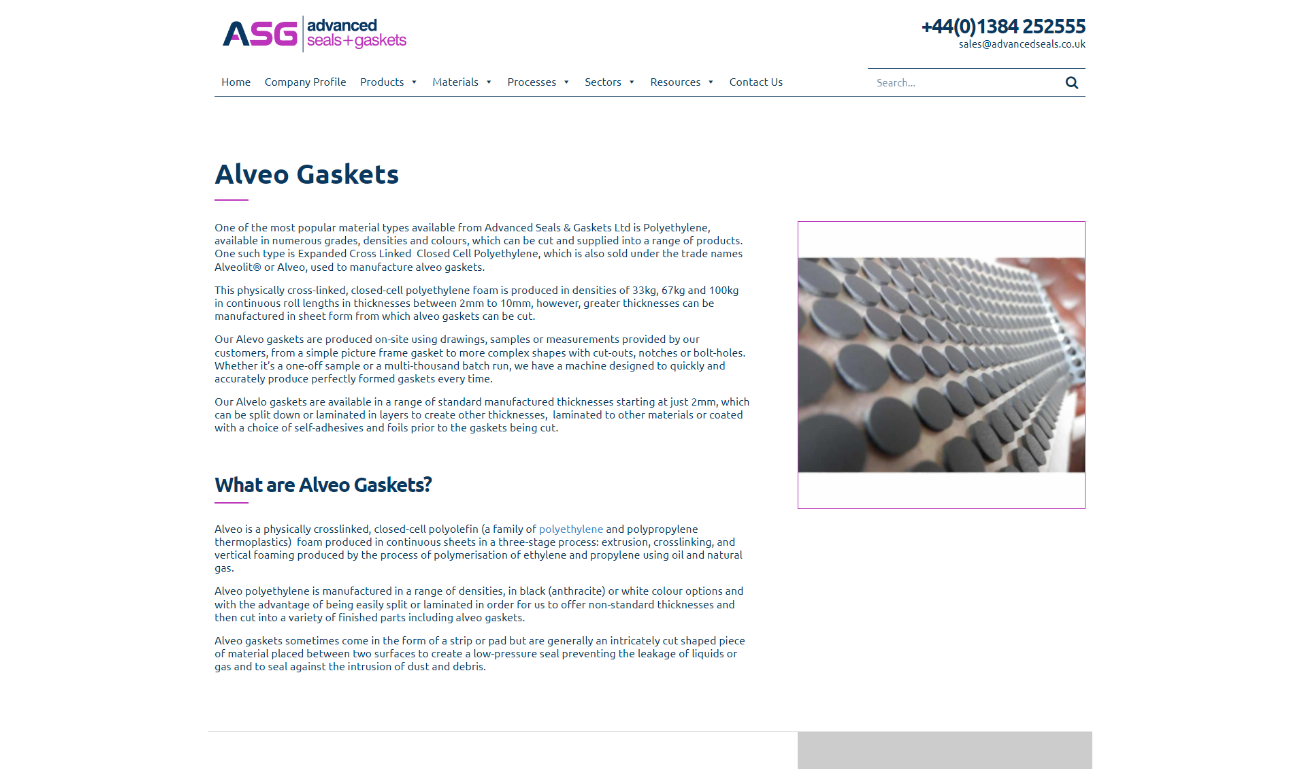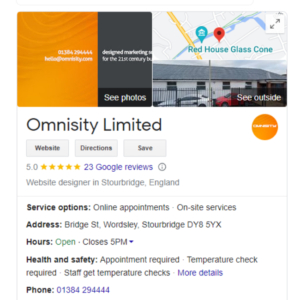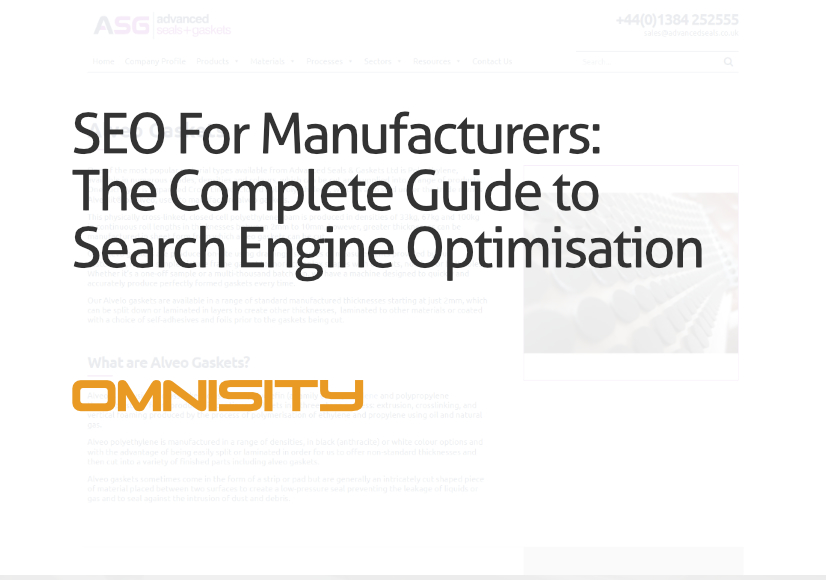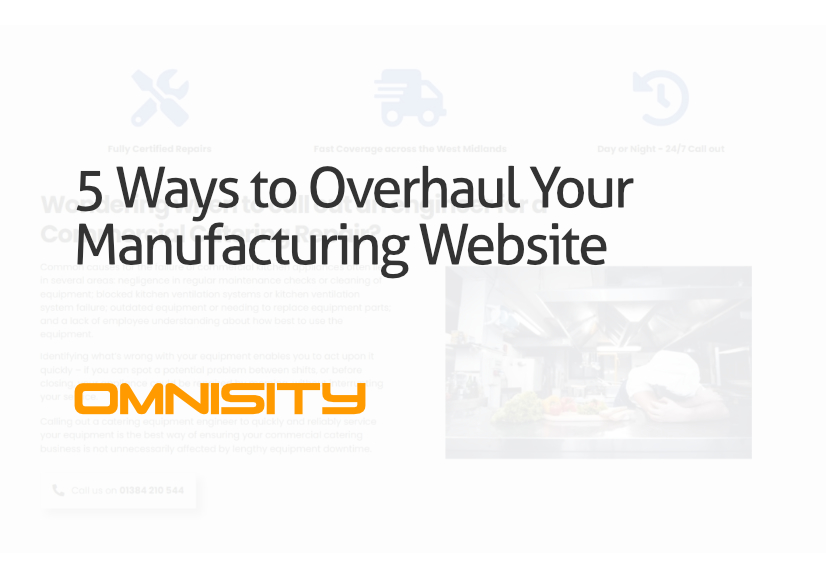B2B Local SEO: A Manufacturer's Guide to Local SEO
As a company, you understand the need for a strong online presence. Not only do you need a website that showcases your products and services, but you also need to be ranked high on search engine results pages (SERPs) for relevant keywords. This can be achieved with SEO (search engine optimisation), which uses a variety of ways to optimise your website for search engines like Google and Bing.
Key Talking Points:
The goal of local SEO is to improve your online content so that it appears in search engine results for a specific location (typically the area in which your business resides). It's similar to traditional SEO but focuses on local keywords (such as web design West Midlands, SEO West Midlands and search engine optimisation West Midlands), business listings, and other local signals.
Any business wanting to be discovered online must employ local SEO, but it's even more crucial for those businesses with physical places of business, such as shops. That's because potential customers searching for local businesses are usually ready to buy.
Smaller companies, as well as larger businesses, can benefit from local SEO. If you run a small company, a local SEO guide might be an excellent means to get your business recognised online. After all, most individuals use search engines like Google and Bing when seeking local businesses.
You may take a number of steps to optimise your website for local SEO:
- Ensure your website is listed in local directories and business listings.
- Use local keywords in your website content.
- Create local material that will appeal to local audiences (such as blogs).
Small businesses should utilise local SEO as it will help you reach out to local consumers searching for your products or services. If you optimise your website for local SEO, you'll be more likely to show up in local search results, which means more potential customers will see your business.
So, don't neglect the importance of local SEO business listings if you're a small company. Instead, begin with these suggestions to get started, and you'll be on your way to attracting more local consumers.
As a business-to-business manufacturer, you may not think that local SEO tactics are something you need to worry about. After all, your customers are businesses, not individual consumers, so why would you need to optimise your website for local search?
The answer is simple: even though your customers are businesses, they're still people. And people use local search all the time to find businesses in their area, even if they're not looking for a specific product or service.
For example, assume you run a restaurant supply firm. A potential customer opening a new restaurant might not know your company exists. Still, they can find you quickly enough by searching locally for "restaurant supplies" in their area.
For example, you may run a manufacturing company which creates cutting tools. A potential customer looking for new tooling might not know your company exists. After searching online for “cutting tooling suppliers near me”, they can find your company quickly.
You are more likely to come across your website if it's optimised for a local search than if it isn't. And even if they don't buy anything from you, simply being aware of your company can make a big difference when you are looking for a supplier in the future.
Making your customers aware of your business in the local area is a key step in increasing your business’ presence and sales. If your website is optimised for local search it allows potential customers to become aware of your brand, which may be helpful in the future.
Google Map Pack
This is a sample of three local company listings that appear at the top of Google search results when someone searches for a term with local intent.
The pack consists of the following:
- The name, address, and phone number (NAP) of the business
- A direct link to the website
- Customer reviews and ratings from Google
- An image or logo related to the business
You'll need to create and verify a Google My Business (GMB) listing to get your business listed in the Map Pack. Once you've completed and verified your Google My Business listing, keeping your NAP information up-to-date and consistent across all platforms is essential. This is one of the main factors Google looks at when determining which businesses to list in the Map Pack.
In addition to having a GMB listing, there are a few other things you can do to improve your chances of being included in the Map Pack:
- Optimise your website for local SEO by including keyword-rich titles, metatags, and descriptions.
- Make sure your website is mobile-friendly.
- Encourage clients to post reviews on your GMB listing.
- Use structured data markup to provide Google with additional information about your business.
By following these tips, you can improve your chances of being included in the Google Map Pack and get more exposure within the local area where your business resides. Local SEO is integral to any marketing strategy, so ensure you're doing everything possible to optimise your website and GMB listing.
As a manufacturer, you have unique challenges when marketing your business online. For example, you may have multiple locations, an extensive product catalogue, and a complex sales process. But with the right local SEO strategy, you can overcome these challenges and make your manufacturing business more visible online.
Here are Omnisity's top tips for implementing local SEO for manufacturers:
Optimise Your Local Business Listing (Google My Business)
Optimising your Google My Business listing is one of the essential things you can do to improve your local SEO. Your Google My Business listing is what appears in the "map pack" when someone searches for a manufacturing business in their area.
Ensure that your NAP (name, address, and phone number) is the same on all of your online listings, particularly your website and social media accounts. Inconsistent NAP information can confuse Google and hurt your ranking in the map pack.
Include as much information as possible in your GMB listing, such as business hours, products and services offered, photos, and reviews. The more thorough your local business listing is, the more likely people will contact you.
The image above highlights an example of on-page SEO work that we have previously done for our client, Advanced Seals & Gaskets.
Optimise Your Website for Local SEO
One of the most critical aspects of local SEO is ensuring your website is optimised for search engines and potential customers. This means ensuring that your NAP (name, address, phone number) details are prominently displayed on your website and that your website is suitable for all devices.
There are two main types of optimisation that you can do for your website: on-page and off-page. On-page optimisation is optimising your website's content, structure, and coding to make it as search engine friendly as possible. Off-page optimisation is the process of improving your website's visibility in search engines through methods such as link building and social media marketing.
B2B Local SEO & Content Marketing
Content marketing and SEO are closely linked, so much so they work hand-in-hand to develop your website in a search engine-friendly way. After all, what's the point of creating great content if no one will ever see it? And with nearly 80% of shoppers starting their product research online, it's more important than ever to ensure your website and content are optimised for search.
But what about local SEO? As a manufacturer, you may not have a brick-and-mortar shop front, but that doesn't mean you can't benefit from optimising your website for local search. In fact, with more and more people searching for products and services on their mobile devices, local SEO is more important than ever.
Creating local content is another approach to enhancing your local SEO. This can be through blog posts, articles, or even videos. Local content helps Google understand that your business is relevant to people in your area.
Ask Your Customers for Reviews on Google
One of the most essential things you can do for your company is to request reviews on Google from your consumers. It not only benefits local SEO but also fosters client confidence and trust.
To get started, go to Google My Business and claim your listing. You may now begin requesting reviews from your consumers once you've claimed your listing.
Keep Consistency Across Citations/NAP (Name, Address, Phone Number)
Having different NAP information listed on other directories can confuse Google and hurt your ranking. So if you've moved locations or changed your phone number, be sure to update your listing on Google My Business and all other directories.
Your NAP details should be included in your website's header or footer, making them easy to find. If your website is not mobile-friendly, potential customers will have difficulty viewing it on their smartphones or tablets. This will result in a poor user experience and could hurt your chances of ranking high in local search results.
The image above shows the Omnisity local SEO business listing on Google (Google My Business Listing).
... contacting our experienced team today on 01384 294 444 or by emailing [email protected].
Manufacturers may use local SEO to boost their internet presence and organic search rankings. By optimising their website for local search, and building up their online presence in the local area, they can attract more potential customers to their website.
If you're a business that wants to enhance your Local SEO, Omnisity can assist. We are a local SEO company that focuses on digital marketing. We can assist you in improving your website for local search, and developing your online presence in the local region.



